Under second preference (F2A & F2B) family-based green card petitions, green card holders (Lawful Permanent Residents) can sponsor their spouse and unmarried children for a green card.
- 1.
- 2.
- 3.
- 4.
- 5.
- a.
- b.
- c.
- 6.
- a.
Table of Contents
There are 2 subcategories under the second preference (F2A & F2B) family-based green card petitions:
Close Family Members of Green Card Holders (Lawful Permanent Residents)
- Second Preference (F2A): Spouses or unmarried children under 21 years old of green card holder
- Second Preference (F2B): Unmarried children over 21 years old of green card holder
The original statutory wording for qualified foreign persons in family-based green card petitions for U.S. lawful permanent residents can be found in 8 CFR 204.1(a)(1).
The qualifications for the two subcategories under the second preference (F2A & F2B) family-based green card petitions are listed below:
Second Preference (F2A): Spouses or unmarried children under 21 years old of green card holder
Under the F2A second preference family-based green card category, the qualified foreign person must be either the spouse or a minor child (unmarried and under 21 years old) of a green card holder.
If the child under the F2A second preference family-based green card petition turns 21 years old before gaining their green card visa status, the person will no longer qualify as a minor child (unmarried and under 21 years old) of a green card holder under the F2A green card category and will be converted into an adult child (unmarried and over 21 years old) of the green card holder under the F2B green card category which may result in a significant delay in the processing time due to the increased waiting time for the priority date to become current.
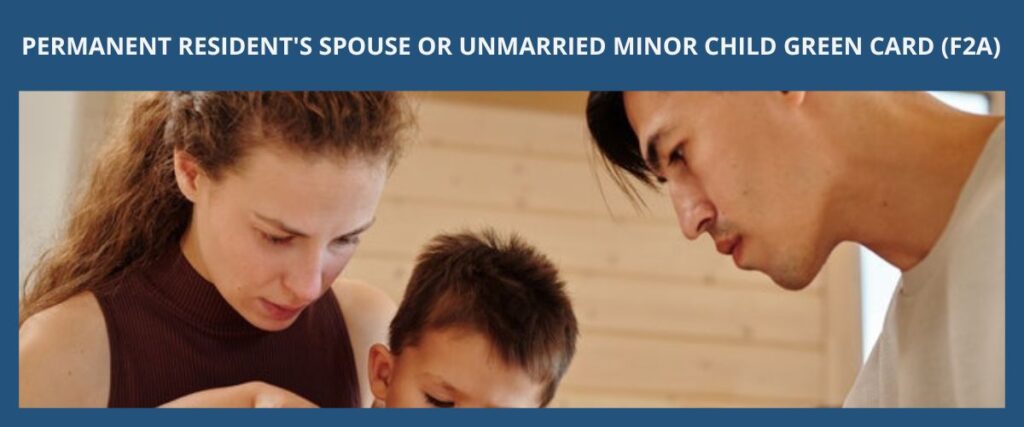
Second Preference (F2B): Unmarried children over 21 years old of green card holder
Under the F2B second preference family-based green card category, the qualified foreign person must be an unmarried adult child (21 years old or older) of a green card holder.
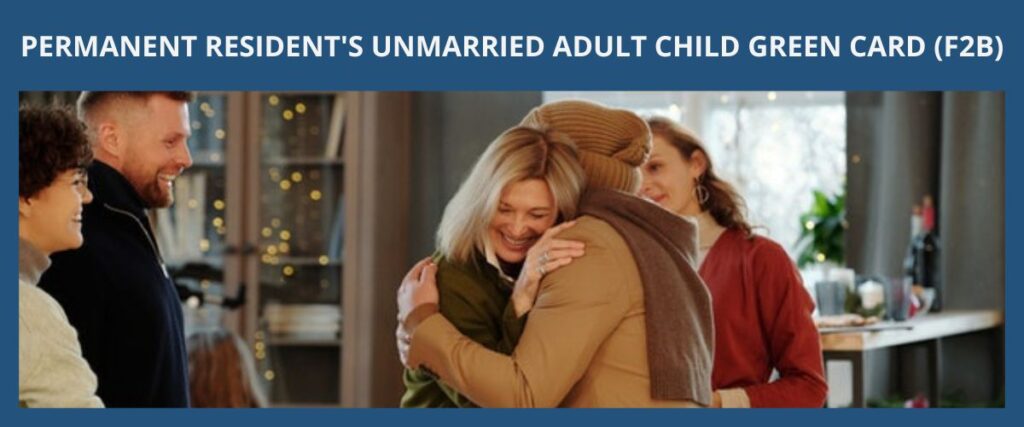
Adopted Children
An adopted child of a green card holder can qualify for a second preference (F2A & F2B) family-based green card petition if (1) the adoption was finalized before the child turned 16 years old, (2) the adoptive parents had legal custody for 2 years (which can be before or after the adoption), and (3) the child has lived with the adoptive parents for 2 years (which can be before or after the adoption). The legal custody must have been gained through a formal court procedure and the adoptive parents must show that they had exercised primary parental control over the adopted child if the adopted child continued to live in the same house as their biological parent during the 2-year residence requirement.
The adopted child’s natural sibling who is (1) under 18 years old, (2) the natural sibling shares at least one biological parent with the adopted child, and (3) has been adopted or will be adopted by the same adoptive parents can also qualify under the F2A or F2B family preference green card category.
Step-Children
A step-child of a green card holder can also qualify for an F2A or F2B family preference green card petition if the marriage between the U.S. citizen and the foreign spouse happened before the child turned 18 years old.
Second Preference (F2A or F2B) Children Gets Married
If the children of green card holders under the second preference (F2A or F2B) gets married before they obtain the green card, their second preference family-based green card petition will automatically be revoked. If a married child of a green card holder gets divorced, they can regain eligibility for a new second preference (F2A or F2B) family-based green card but cannot reuse any priority date from their past revoked family-based green card petitions. The one exception that may be able to reinstate the second family preference eligibility of a divorced child of a green card holder would be if there was a court-determined annulment.
Sponsoring Green Card Holder Naturalizes into U.S. Citizen
If the sponsoring green card holder becomes a U.S. citizen before the second-preference family-based green cards (F1A or F2B) are issued, the spouse and unmarried minor children of the green card holder under the second family preference (F2A) can be upgraded to the immediate relative (IR) system and the unmarried adult children of the green card holder under the second family preference (F2B) can be upgraded to the first family preference (F-1 Unmarried children over 21 years old of U.S. citizens). The priority date of the original family-based green card petition can still be used after the upgrade.
Typically, the first-preference (F-1 Unmarried children over 21 years old of U.S. citizens) has a longer waiting time than the second-preference (F-2B Unmarried children 21 years old or older of green card holders) so when the sponsoring green card holder becomes a U.S. citizen, their unmarried children under the second-preference (F-2B Unmarried children 21 years old or older of green card holders) usually choose to opt-out of upgrading to the first-preference (F-1 Unmarried children over 21 years old of U.S. citizens) category.
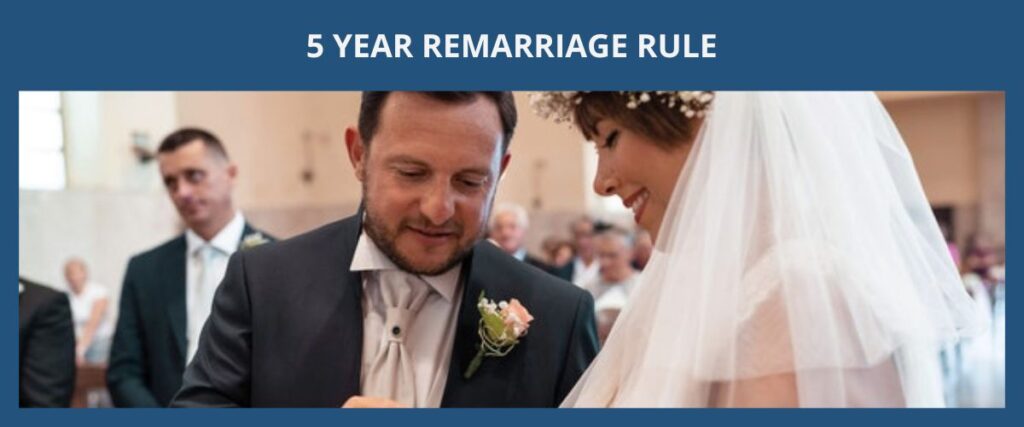
Remarried Sponsoring Green Card Holder (5-Year Rule)
There are additional requirements for green card holders who gained their green card through marriage and are sponsoring a second preference (F2A) family-based green card petition for a new spouse within 5 years of their marriage-based green card being issued.
A marriage-based green card holder cannot remarry and sponsor their new spouse through a second preference (F2A) marriage-based green card petition within 5 years of when their green card was issued unless they can show that the first marriage was real and it was entered in good faith with clear and convincing evidence (which is relatively higher than in normal circumstances). The exception to the required 5-year waiting time for the remarried marriage-based green card holder is when the U.S. citizen or green card holder that sponsored the first marriage passed away.
Alternatively, marriage-based green card holders who got remarried and wants to sponsor their new spouse for a marriage-based green card within 5 years of them obtaining the green card status can choose to naturalize into a U.S. citizen and file under the immediate relative (IR) system to sponsor their new spouse to avoid the required 5-year waiting time as a marriage-based green card holder.
The marriage-based green card holder who is sponsoring the green card in the second marriage includes the green card holders who obtained their marriage-based green card under the second family preference (F2A) marriage-based green card petitions or Immediate Relative (IR) system and do not include those who obtained their green card as a derivative spouse. For example, a derivative spouse can be a person who obtained their green card by being married to someone who obtained an employment-based green card petition during their marriage.
The second preference (F2A & F2B) family-based green card petitions have four main requirements that need to be satisfied: evidence must be provided to the USCIS to show that the (1) the sponsoring person must be a green card holder (lawful permeant resident), (2) the family relationship between the foreign person and the green card holder is qualified and real, (3) the foreign person will not become a public charge (typically the green card holder must have income that is at least at the 125 % of the federal poverty level), and (4) the foreign person is admissible to enter the United States.
Evidence Required for the Second Preference Family-Based Green Card
A general (not exhaustive) checklist of what is required for a second preference (F2A & F2B) family-based green card is listed below. The evidence provided for a second preference family-based green card petition must show:
The person sponsoring the second preference (F2A & F2B) family-based green card petition is a green card holder (lawful permanent resident)
- Two passport photos of the U.S. green card holder
- U.S. permanent resident card (Form I-551 green card)
- Documents that show legal name change (e.g., court judgment of name change, marriage certificate, divorce decree, adoption decree)
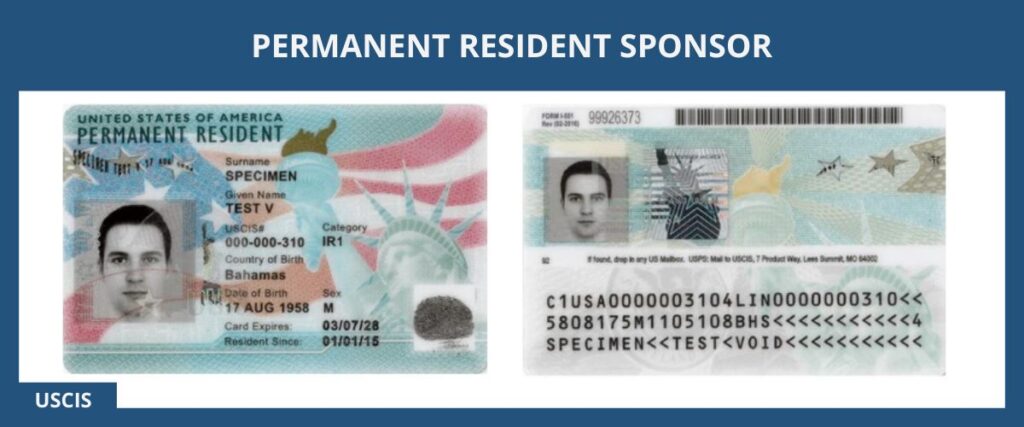
There is a family relationship between the green card holder and the foreign spouse or children
- Two passport photos for each foreign person
- Marriage certificate between foreign spouse and green card holder
- Birth certificates (it should show names of both parents)
- Divorce by legal termination of all prior marriages for the foreign spouse and the U.S. green card holder (e.g., divorce decree, annulment order, death certificate of prior spouse)
- Form I-130A (Supplemental Information for Spouse Beneficiary) if foreign spouse is already in the United States
For adopted children, additional documents must be provided:
- Final adoption decree (must have taken place before the child turned 16 years old and it should include the name of the adoptive parents, the date and place of adoption)
- Documents that show there were 2 years of legal custody of the adopted child
- Documents that show there were 2 years of joint residency (living at the same address) with the adopted child
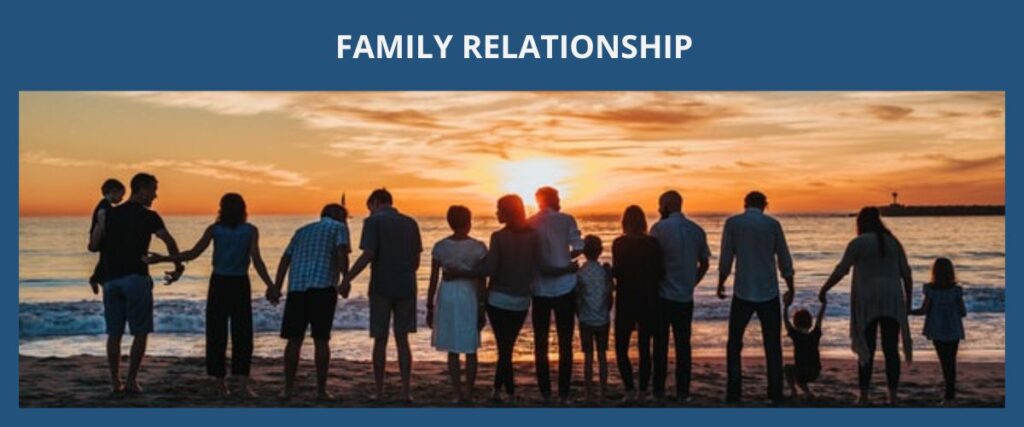
The marriage is bona fide (real)
- Documents that show joint ownership of property
- Lease that shows joint tenancy of a common residency (living at the same address)
- Documents that show combined financial resources
- Birth certificates of children born by the green card holder and the foreign spouse
- Affidavits from a third party who has personal knowledge (first-hand) that the marriage is real. (it should include the affiant’s full name, address, place of birth, date of making the affidavit, and the detailed explanation of how and what the person knows about the marriage)
- Any other documents that can show the marriage is ongoing
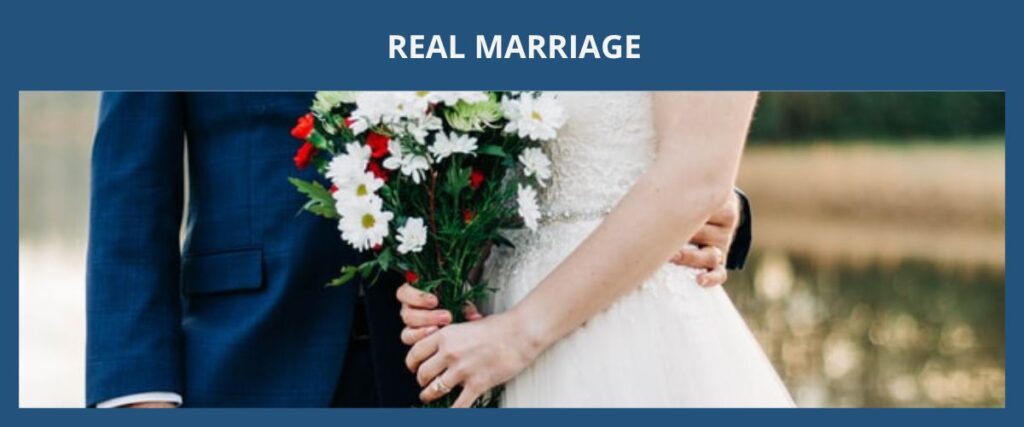
The foreign person will not become a public charge in the United States
- Affidavit of Support (Form I-864)
- Documents that show the green card holder’s income is at least at the 125% of the federal poverty level (e.g., most recent tax returns, bank statements)
eng-1024x427.jpg)
The foreign person is admissible to enter the United States
- Passport (expiration date must be more than 6 months than the time intended to stay in the United States)
- Two passport photos
- Police certificates (it should include the country of residence and all countries that the person has lived for at least 6 months since 16 years old)
- Sealed medical examination form
If the person is filing for an adjustment of status, the foreign person must provide additional documents to show that they have been maintaining a valid nonimmigrant visa status during their time in the United States:
- Passport pages (it should include biographical page, related U.S. visas, admission stamps, parole stamps)
- Arrival/Departure Record (Form I-94)
- Documents that show the persons valid nonimmigrant status (e.g., I-20, I-797)
- Form I-864 (Affidavit of Support Under Section 213A of the INA) OR Form I-864EZ (Affidavit of Support Under Section 213A of the INA) *Petitioner must be at least 18-year-old to sign
- Documents that show the financial support for or financial condition of the person (e.g., Form W-2 for the past three years, employment verification letters)
- Report of Medical Examination and Vaccination Record (Form I-693)
- Family-based green card petition (it should include Form I-130 and all required documentation) if filing the adjustment of status (Form I-485) concurrently
- Receipt notice or approval notice (Form I-797) of the family-based green card petition (Form I-130) if not filing the adjustment of status (Form I-485) concurrently
The original statutory wording for the evidentiary requirements of family-based green cards for the spouse and dependent children of U.S. lawful permanent residents can be found in 8 CFR 204.2(a) and 8 CFR 204.2(d).
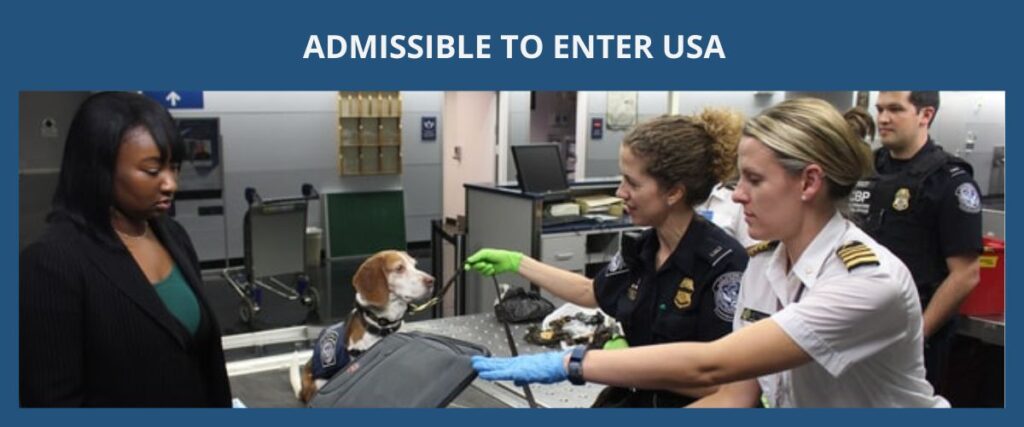
The total time an F2A or F2B family preference green card takes is consisted of the processing time for (1) the F2A or F2B family preference green card petition (Form I-130) with the USCIS and (2) the change of status when the person’s priority date becomes current by filing the Form I-485 application if adjusting status within the United States or the DS-260 application if doing consular processing at a U.S. consulate or embassy located outside the United States.
Factors that influence the F2A or F2B family preference green card processing time usually include but are not limited to where the person (or spouse) was born, if there was any Request for Evidence (“RFE”) issued, and the caseload of the USCIS service center, National Visa Center (NVC), and the U.S. consulate or embassy.
A rough estimate of the F2A family preference green card Form I-130 petition (spouses or unmarried children under 21 years old of green card holder) processing time can be around 3.5 to 34.5 months. A rough estimate of the F2B family preference green card Form I-130 petition (unmarried children over 21 years old of green card holder) processing time varies widely from 21 to 73.5 months. Premium processing is not available in either the F2A family preference green card petition (spouses or unmarried children under 21 years old of green card holder) or the F2B family preference green card petition (unmarried children over 21 years old of green card holder). Current estimates of the processing time can be checked here.
Priority Date for Status Change
After the USCIS approves the F2A or F2B family preference green card (Form I-130), the person will then wait for their priority date to become current to apply for a change of status into a green card holder (lawful permanent resident). The priority date for the F2A or F2B family preference green card petition is the date that the USCIS receives the immigration petition (Form I-130).
There are two parts in the processing time for a change of status: (1) the time to when the person’s (F2A or F2B) priority date becomes current which can range from no wait time to multiple years depending on what country the person was born in, and (2) the time to process Form I-485 for adjustment of status or DS-260 for consular processing which a rough estimate can range from 4 to 15 months.
For F2A family preference green card petitions (spouses or unmarried children under 21 years old of green card holder), the wait time for the person’s priority date to become current can roughly be from no wait time to around 2 years. F2A family preference green card priority dates have been current (i.e., no wait time) in the recent years. For F2B family preference green card petitions (unmarried children over 21 years old of green card holder), the wait time for the person’s priority date to become current can roughly be around 6 years (with Mexico around 21 years). For people born in certain countries (based on country of birth and not country of citizenship) such as Mexico or the Philippines, the wait time for their priority date to become current is usually longer than other countries under the second preference family-based green card petitions.
The reason as to why there are different wait times for a priority date to become current is due to the total limit on how many green cards (immigrant visas) can be given out each year and a separate limit on how many green cards are allotted for each country. There are usually not enough available visas (i.e, amount of green cards that can be given out) for family preference green card petitions (e.g., F2B green cards) each year due to high-volume immigration so people would have to wait for their visas (green cards) to become available which would be based on when their priority date becomes current in the monthly Visa Bulletin released by the U.S. Department of State (DOS).
-eng-1024x1024.jpg)
After the F2A or F2B family preference green card petition (spouse and unmarried children of U.S. citizen) is approved by the USCIS, the foreign person must then change into a green card visa status. Changing into the green card visa status (the lawful permanent resident immigrant visa status) is the final step in being able to work freely and live permanently in the United States. There are two ways to obtain the green card visa status: adjustment of status and consular processing.
Adjustment of status is usually for a person who is already in the United States with a valid nonimmigrant visa status and has maintained a lawful visa status throughout their time within the United States. On the other hand, consular processing is for a person living outside the United States or for a person who is ineligible in adjusting their status in the United States.
For a person who is residing overseas (outside the United States) or a person who is ineligible for an adjustment of status with the Form I-485 application, consular processing must be done to obtain the F2A or F2B family preference green card visa status (i.e., lawful permanent resident). Consular processing usually involves the person attending an in-person interview at the U.S. consulate or embassy located in their home country. In certain circumstances, a person can do consular processing in another country as a “Third Country National.”
After the interview approval at the U.S. consulate or embassy, the person would have to be admitted entry into the United States by the CBP officer at the border (usually at the airport). In other words, the person would have to physically enter the United States after their interview approval as the final step for their F2A or F2B family preference green card visa status to be activated.
For a person who is already in the United States with a valid nonimmigrant visa, there are usually two options available to obtain their F2A or F2B family preference green card visa status (Lawful Permanent Resident):
(1) Adjustment of Status: this is the more commonly chosen option where the person would file a Form I-485 application to adjust their status without leaving the United States. The person would attend an in-person interview at a local USCIS office in the United States and the interview approval would serve as the final step for their F2A or F2B family preference green card visa status to be activated.
The adjustment of status application (Form I-485) can be filed when the person’s priority date becomes current in the Visa Bulletin which means that there are no backlogs in visa availability for the person’s country of birth (not country of citizenship). This can happen while the green card petition (Form I-130) is still pending (i.e., before approval) with the USCIS or after the green card petition (Form I-130) is approved by the USCIS. It can also happen in concurrent filings (Form I-130 and Form I-485 sent together) where the person’s priority date is already current at the time of filing the green card petition (Form I-130) to the USCIS. Concurrent filings of the adjustment of status application and the F2A green card petition (spouse and dependent children of green card holders) have been seen in the recent years but still not for F2B green card petitions (unmarried adult children of green card holders).
When the adjustment of status application (Form I-485) is filed, applications for the employment authorization document (Form I-765, commonly known as the “EAD card”) and the travel document (Form I-131, commonly known as “Advance Parole”) can also be filed at the same time.
The EAD card allows unrestricted employment where a person can change their job freely and can legally work for any employer in the United States, unlike a work visa such as an H1B visa which restricts a person to work for a specific employer in the United States.
Advance parole allows a person to travel internationally while their adjustment of status is still pending. If a person has a pending adjustment of status application (Form I-485) with the USCIS but leaves the United States without advance parole and does not have a certain valid nonimmigrant visa status (H1B visa, H4 visa, L1 visa, L2 visa, K3 visa, K4 visa, V visa) that allows international travel, their adjustment of status will be considered abandoned.
(2) Consular Processing: this is usually chosen if a person cannot show that they have maintained their lawful visa status in the United States or when the processing time for consular processing is much faster than the adjustment of status.
EAD-ADVANCED-PAROLE-COMBO-CARD(二合一工卡&提前離境許可證)eng-1024x1024.jpg)
The F2A family preference green card petition is for the spouse and dependent children (unmarried and under 21 years old) of U.S. green card holders. The F2B family preference green card petition is for the unmarried adult children (over 21 years old) of U.S. green card holders. The U.S. green card holder’s step children (where the marriage with their parent should be before the child turned 18 years old) and adopted children (who should have been adopted before 16 years old) can be included as children under the F2A or F2B family preference green card petitions.
If you have an F2A family preference (spouse and unmarried minor children of green card holder) or F2B family preference (unmarried adult children of green card holder) green card immigration question, please fill out our contact us form or send us an email with some basic information about your background and your immigration needs. We will do our best to respond within 48 hours.
How we can help?
Kylie Huang Law’s immigration attorney will help identify what type of family-based green card the client is qualified for and whether there are other green card options available to the client. We will work closely with our clients to prepare their F2A & F2B family-based green card petition and we will also strategize on how the F2A & F2B family-based green card petition should be presented in the filings and in the interview to achieve the best chances of approval. It is advised and common practice to retain an immigration attorney for certain unusual F2A & F2B family preference green card petitions due to the complexities in the immigration process and visa requirements.
What does the typical process look like to retain (hire) us?
- Step 1:
- Step 2:
- Step 3:
- Step 4:
- Step 5:
- a.
- b.
- c.
- Step 6:
- Step 7:
- Step 8:
- Fill out the form (with some basic information on what your immigration needs are)
- Sign up and log into the client portal to schedule an appointment online
- Attend scheduled appointment (typically a phone call or zoom meeting)
- Retainment (signing a contract to hire us)
- Start processing case
- Gathering required documents
- Preparing paperwork
- Confirming contents of documents that will be submitted
- Filing the case
- Following up on the status of the case
- Close the case when a final determination is issued
- Step 1:
- Step 2:
- Step 3:
- Step 4:
- Step 5:
- a.
- b.
- c.
- Step 6:
- Step 7:
- Step 8:
- Fill out the form (on what your immigration needs are)
- Sign up and log into the client portal to schedule an appointment
- Attend scheduled appointment (typically a phone call or zoom)
- Retainment (signing a contract to hire us)
- Start processing case
- Gathering required documents
- Preparing paperwork
- Confirming contents of documents that will be submitted
- Filing the case
- Following up on the status of the case
- Close the case when a final determination is issued
- Step 1:
- Step 2:
- Step 3:
- Step 4:
- Step 5:
- a.
- b.
- c.
- Step 6:
- Step 7:
- Step 8:
- Fill out the form (on what your immigration needs are)
- Sign up and log into the client portal to schedule appointment
- Attend scheduled appointment (typically a phone call or zoom)
- Retainment (hire us)
- Start processing case
- Gathering required documents
- Preparing paperwork
- Confirming content of documents that will be submitted
- Filing the case
- Following up on the case status
- Close the case when a final determination is issued
RELATED ARTICLES
- Spouse of Green Card Holders Checklist (F2A)
- Children of Green Card Holders Checklist (F2A / F2B)
- Spouse of U.S. Citizen Green Card Checklist (IR1 / CR1)
- Children of U.S. Citizen Green Card Checklist (IR2 / F1 / F3)
- Sibling of U.S. Citizen Green Card Checklist (F-4)
- Parents of U.S. Citizen Green Card Checklist (IR5)
- Widow(er) of U.S. Citizen Green Card Checklist (EB4)

